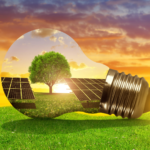Understanding the Global Water Crisis The global water crisis is a pressing issue that affects billions of people worldwide. According to the United Nations, over 2 billion people live in countries experiencing high water stress, and approximately 785 million lack access to basic drinking water services. This crisis is not confined to any one region; it spans continents and impacts diverse communities, underscoring the interconnectedness of our global ecosystems. Water scarcity is particularly severe in areas such as Sub-Saharan Africa, the Middle East, and parts of Asia, where arid climates exacerbate the challenges of securing adequate water supplies. Several root causes contribute to the worsening global water crisis. Climate change plays a significant role, as rising temperatures and altered precipitation patterns lead to droughts and reduced freshwater availability. For instance, the melting of glaciers and diminished snowpack reduce the flow of rivers that millions depend on. Population growth further compounds the issue, with increasing demand for water in agriculture, industry, and domestic use outstripping available resources. Pollution also poses a significant threat; industrial waste, agricultural runoff, and improper sanitation practices contaminate water bodies, rendering them unsafe for use. The ramifications of water scarcity are far-reaching. It affects food production, as agriculture is the largest consumer of freshwater resources. Inadequate water supply can lead to crop failures, food shortages, and increased prices, disproportionately impacting the most vulnerable populations. Additionally, water scarcity can exacerbate conflict and displacement, as communities compete for dwindling resources. The health implications are dire, with waterborne diseases proliferating …
Understanding the Global Water Crisis
The global water crisis is a pressing issue that affects billions of people worldwide. According to the United Nations, over 2 billion people live in countries experiencing high water stress, and approximately 785 million lack access to basic drinking water services. This crisis is not confined to any one region; it spans continents and impacts diverse communities, underscoring the interconnectedness of our global ecosystems. Water scarcity is particularly severe in areas such as Sub-Saharan Africa, the Middle East, and parts of Asia, where arid climates exacerbate the challenges of securing adequate water supplies.
Several root causes contribute to the worsening global water crisis. Climate change plays a significant role, as rising temperatures and altered precipitation patterns lead to droughts and reduced freshwater availability. For instance, the melting of glaciers and diminished snowpack reduce the flow of rivers that millions depend on. Population growth further compounds the issue, with increasing demand for water in agriculture, industry, and domestic use outstripping available resources. Pollution also poses a significant threat; industrial waste, agricultural runoff, and improper sanitation practices contaminate water bodies, rendering them unsafe for use.
The ramifications of water scarcity are far-reaching. It affects food production, as agriculture is the largest consumer of freshwater resources. Inadequate water supply can lead to crop failures, food shortages, and increased prices, disproportionately impacting the most vulnerable populations. Additionally, water scarcity can exacerbate conflict and displacement, as communities compete for dwindling resources. The health implications are dire, with waterborne diseases proliferating in regions lacking clean water and sanitation. This creates a vicious cycle of poverty and ill health, stymieing development efforts.
Given the severity and complexity of the global water crisis, immediate action is imperative. The slogan ‘Every Drop Counts’ encapsulates the urgency and collective responsibility required to address this issue. By understanding the gravity of the crisis and its underlying causes, we can better appreciate the critical importance of water conservation and the need for sustainable practices to ensure that every drop is utilized efficiently and equitably.
Daily Water-Saving Techniques
Conserving water in everyday life is a vital step toward sustainable living. Implementing practical water-saving techniques can significantly reduce water usage in households, gardens, and workplaces. One of the simplest yet most effective measures is fixing leaks. A dripping tap or a leaking toilet can waste several gallons of water daily. Regularly checking for and repairing leaks ensures that no water is unnecessarily lost.
Taking shorter showers is another straightforward method to conserve water. Reducing shower time by just a few minutes can save a considerable amount of water. Additionally, installing water-efficient showerheads and faucets can further minimize water use without compromising on comfort. When it comes to appliances, opting for water-efficient models, like front-loading washing machines and low-flow toilets, can lead to substantial water savings over time.
Mindful water use extends beyond the home. In the garden, watering plants during the early morning or late evening reduces evaporation, ensuring more water reaches the roots. Using drought-resistant plants and implementing rainwater harvesting systems can also significantly cut down on water usage. Mulching around plants helps retain soil moisture, reducing the need for frequent watering.
In the workplace, encouraging simple practices such as turning off taps tightly, using water-saving fixtures, and promoting awareness about water conservation can make a big difference. Collective efforts in an office environment can lead to noticeable reductions in water consumption.
The impact of these small actions is amplified when adopted collectively. For instance, a community in California implemented a campaign to fix leaks and install water-efficient appliances, resulting in a 20% reduction in water usage over a year. Such real-life examples highlight the significance of daily water-saving techniques and the potential for substantial water savings when individuals and communities work together.
Workshops and Community Engagement
Community engagement plays a pivotal role in successful water conservation efforts. By organizing and conducting workshops on water-saving techniques, communities can harness collective action towards a sustainable future. The first step in organizing such workshops is to identify relevant topics that resonate with the community. This could include efficient water use in daily activities, drought-resistant landscaping, and advanced irrigation methods. Choosing knowledgeable and engaging speakers is equally important; local experts, environmental scientists, and experienced practitioners can provide valuable insights and practical advice to participants.
Promoting these events is crucial to ensure high attendance and active participation. Utilize various channels such as social media, local newspapers, community bulletin boards, and school newsletters to spread the word. Collaboration with local schools, businesses, and community centers can also amplify reach and impact.
A practical workshop topic is rainwater harvesting systems. Begin by explaining the benefits of rainwater harvesting, including reduced dependence on municipal water supplies and cost savings. Provide a step-by-step guide: start with selecting appropriate equipment such as rain barrels, gutters, and filtration systems. Next, instruct on proper installation techniques, ensuring all components are securely connected. Finally, emphasize the importance of regular maintenance, such as cleaning filters and checking for leaks, to ensure the system’s longevity and efficiency.
Encouraging community members to engage with local schools and businesses can further amplify water conservation efforts. Schools can incorporate water-saving practices into their curriculum, and businesses can adopt water-efficient practices in their operations. Hosting community events like water conservation fairs or eco-friendly market days can also foster a sense of collective responsibility and awareness.
Measuring the success of these initiatives involves tracking participation rates, conducting surveys to gather feedback, and monitoring changes in water consumption patterns within the community. Long-term benefits include stronger community ties, enhanced environmental stewardship, and a sustainable water supply for future generations. By fostering a culture of water conservation through workshops and community engagement, every drop truly counts.
Promoting Water-Efficient Fixtures and Technologies
Water conservation is not merely a trend but a necessity in today’s world. Integrating water-efficient fixtures and technologies in homes and businesses is a pivotal step toward sustainable living. Among the most effective solutions are low-flow showerheads, dual-flush toilets, and water-efficient dishwashers and washing machines.
Low-flow showerheads are designed to reduce water consumption without compromising on performance. These fixtures can cut water usage by up to 50%, translating to significant savings on water bills. They are relatively affordable, with prices ranging from $10 to $50, and are straightforward to install, requiring minimal technical expertise.
Dual-flush toilets offer an innovative approach to reducing water usage. These toilets feature two flush options: a lower volume flush for liquid waste and a higher volume flush for solid waste. This system can save up to 68% more water compared to traditional single-flush toilets. Dual-flush toilets range in cost from $150 to $300 and are a valuable investment in both residential and commercial settings.
Water-efficient dishwashers and washing machines are designed to use significantly less water than their conventional counterparts. Modern dishwashers use as little as 3.5 gallons per cycle, compared to older models that might use up to 15 gallons. Similarly, high-efficiency washing machines can use up to 40% less water and 25% less energy. Although the initial cost can be higher, often ranging from $500 to $1,500, the long-term savings on utility bills make them cost-effective choices.
Government incentives and rebates are often available to encourage the adoption of these water-efficient technologies. Programs vary by location but can significantly offset the initial investment costs. It is advisable to check local government or utility websites for available rebates and incentives.
Investing in water-efficient fixtures and technologies not only reduces water consumption but also brings long-term financial benefits. By adopting these technologies, we contribute to the preservation of our planet’s precious water resources. Remember, every drop truly counts.
Sign up for free class
It’s easy and free!


